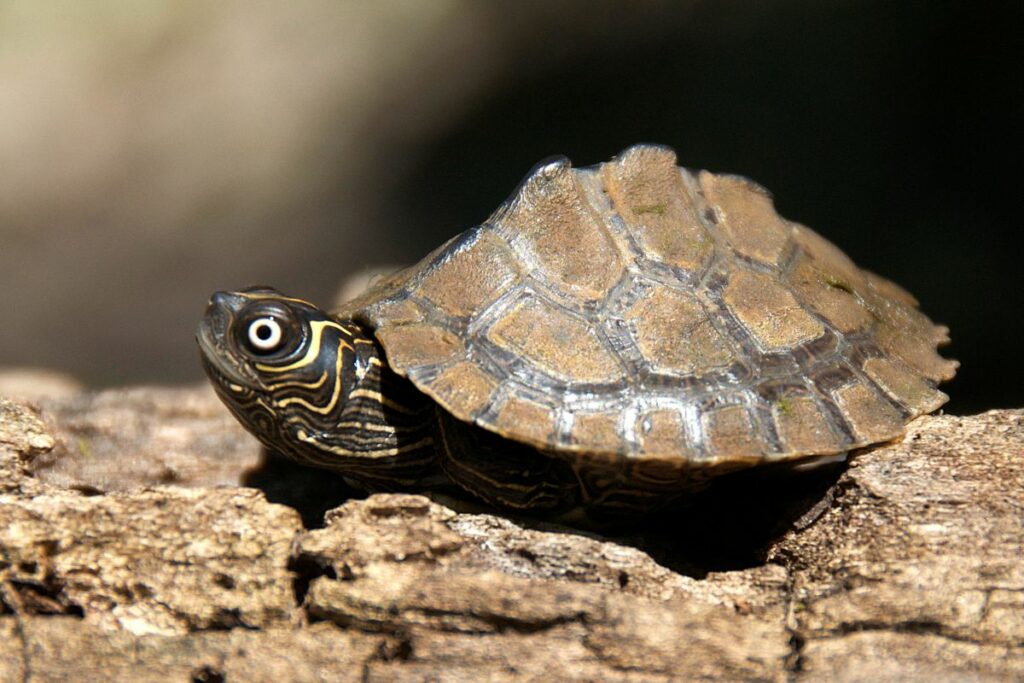How Long Do Map Turtles Live in Captivity? | In captivity, map turtles can live for over 20 years. In the wild, however, their lifespan is much shorter at around 10-12 years. The reason for this difference is that captive turtles are protected from many of the dangers they face in the wild such as predators, disease, and extreme weather conditions.
They also have a constant supply of food and clean water which further contributes to their longevity. If you are considering keeping a map turtle as a pet, be prepared to provide it with proper care for many years to come.
Map turtles are a popular species of turtle to keep as pets. They have a long lifespan and can live for up to 30 years in captivity. However, they require special care and their housing needs to be large enough to accommodate their size.
Map turtles are also known to be escape artists, so their enclosure must be secure.
/GettyImages-138875571-5830ec063df78c6f6ad8ac38.jpg)
Credit: www.thesprucepets.com
Do Map Turtles Make Good Pets?
Are you thinking about getting a pet map turtle? Here’s what you need to know about these turtles before you make your decision. Map turtles are native to North America and can be found in slow-moving rivers, ponds, and lakes.
They get their name from the patterns on their shells, which resemble the contours of a map. Map turtles are semi-aquatic, so they need both land and water to thrive. In the wild, they typically bask in the sun on logs or rocks near the water’s edge.
Map turtles make good pets for people who are prepared to provide them with a proper habitat. They require a large tank or pond with plenty of room to swim and basking areas. The water should be filtered and maintained at a temperature between 75-85 degrees Fahrenheit.
Map turtles also need access to UVB lighting to help them absorb calcium and prevent shell deformities. When it comes to food, map turtles are carnivorous and eat mostly insects, snails, fish, and crustaceans in the wild. In captivity, they can be fed commercial turtle pellets as well as live food like crickets or earthworms.
It’s important to offer your turtle a variety of foods to ensure that they’re getting all the nutrients they need. Overall, map turtles can make great pets for experienced reptile owners who are willing to provide them with everything they need to thrive.
Do Map Turtles Like to Be Held?
Do map turtles like to be held? This is a difficult question to answer definitively because every turtle is different and has its own personality. Some turtles may enjoy being held while others may not, so it really depends on the individual animal.
If you do decide to hold your map turtle, be sure to support its bottom and tail with your fingers so that it feels secure. You should also avoid holding the turtle too close to your face or body as it may feel threatened.
How Long Do Map Turtles Live in Captivity of Northern?
Northern map turtles can live for over 20 years in captivity if they are well cared for. They are a long-lived species of turtle and can reach an age of 30 or more in the wild. In captivity, they will usually live slightly shorter lives due to the stresses of living in an artificial environment.
However, if they are provided with a good diet, plenty of space, and adequate basking and swimming areas, then they can thrive in captivity.
Can You Keep a Northern Map Turtle As a Pet?
If you’re considering a northern map turtle as a pet, there are a few things you should know. For starters, these turtles can live for up to 30 years in captivity, so be prepared for a long-term commitment. They also grow quite large – up to 18 inches shell length – so you’ll need a sizable tank or pond to house them.
Map turtles are semi-aquatic, so they need both land and water areas in their enclosure. And finally, these turtles are native to the Northern United States and Canada, so if you live in another part of the world, it may be difficult to find one for sale.
Assuming you can find a healthy northern map turtle for sale (from a reputable breeder or dealer), and have the proper housing set up, these turtles can make great pets.
They’re generally docile creatures that are interesting to watch. Just be sure to do your research before bringing one home!
Map Turtle Breeding Behavior | DIY Reptiles
How Big Do Map Turtles Get
Most map turtles only grow to be about 6-8 inches long. However, the Chinese three-striped box turtle can reach up to 12 inches in length. The largest recorded map turtle was a Missouri River map turtle that measured 14.5 inches long!
Conclusion
Map turtles are a type of turtle that is popular in the pet trade. They can live for 20-30 years in captivity if they are well cared for. The key to a long and healthy life for a map turtle is providing them with a large enclosure, plenty of places to hide, and clean water.
A diet of fresh vegetables and high-quality turtle food will also help them stay healthy.






Leave a Reply